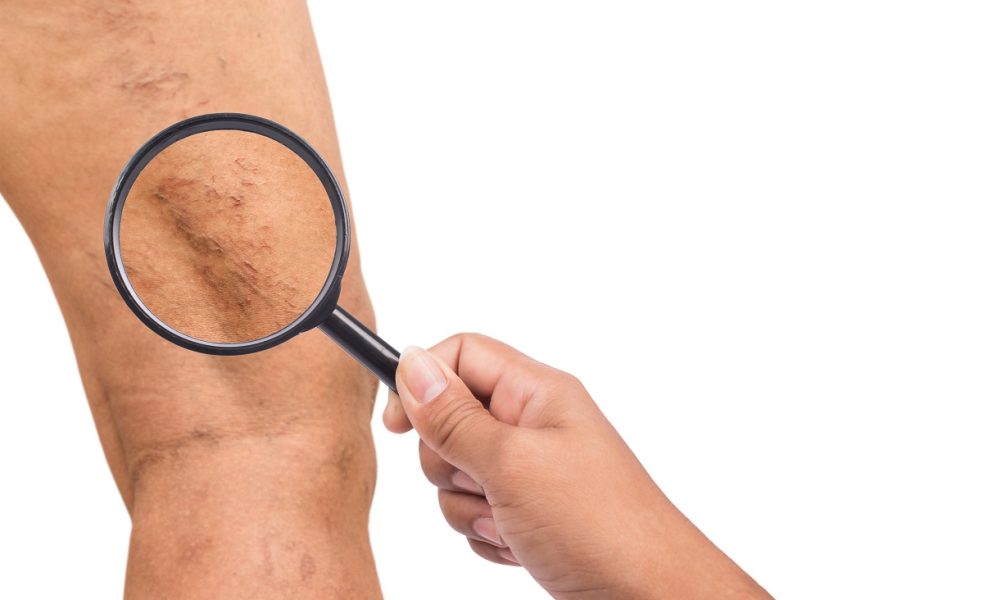- The condition known as venous insufficiency affects the veins in the legs and results in inefficient blood flow to the heart.
- Some visible signs of venous insufficiency include varicose and spider veins, swelling in the legs and ankles, skin discoloration and ulcers on the lower leg, and flaking skin.
- Leg cramps, as is restless leg syndrome, are also possible, which can be a sign of venous insufficiency.
- It is important to recognize these signs early to seek treatment and prevent further complications from occurring.
Venous insufficiency is a condition that occurs when the veins in your legs are unable to return blood to your heart efficiently. It can cause symptoms such as swelling, pain, and even ulcers on the skin of the lower leg. If left untreated, it can lead to serious health problems such as deep vein thrombosis and pulmonary embolism.
Fortunately, there are ways to diagnose venous insufficiency early before it has time to cause too much damage. This article will discuss some of the most common signs and symptoms associated with venous insufficiency so that you know when it’s time to seek medical attention.
Visible signs
Visible signs are some of the most common indicators that you may be dealing with venous insufficiency. Here are some of the most common:
Varicose veins or spider veins

Identifying varicose and spider veins is important in determining if a person has venous insufficiency. To properly identify these conditions, one must be aware of the symptoms and appearance of each. Varicose veins are typically larger, bulging veins that may appear twisted or ropelike.
Spider veins, on the other hand, are smaller and appear closer to the skin’s surface. They can be red, blue, or purple, often resembling a spider web. Identifying these conditions can assist in their early detection and subsequent treatment. Consequently reducing the risk of complications such as blood clots, skin ulcers, and other health issues.
Swelling in the legs and ankles
Identifying swelling in the legs and ankles is crucial in determining whether or not an individual is suffering from venous insufficiency. This condition occurs when the valves in the veins of the legs fail to function correctly, causing blood to pool in the lower extremities. Swelling is an early indicator of this condition and must be recognized promptly.
To properly identify this, it is important to look for symptoms such as tightness, tenderness, and visible veins and seek medical attention if they persist. Proper identification can lead to early treatment and improved outcomes for venous insufficiency patients.
Skin discoloration and ulcers on the lower leg
Early identification of skin discoloration and ulcers on the lower leg is crucial for detecting venous insufficiency. Properly identifying this involves looking for brownish or reddish discoloration areas, typically around the ankles. On the other hand, ulcers are open sores that can occur anywhere on the leg but often appear near the ankle bone. These signs may also be accompanied by swelling or a feeling of heaviness in the legs.
Early detection is critical since the longer venous insufficiency persists, the more difficult it becomes to manage. That’s why individuals need to monitor their legs for these warning signs and seek medical attention if any are present.
Flaking skin on the leg
Correctly identifying flaking skin on the leg can help individuals determine if they have venous insufficiency. Venous insufficiency occurs when the venous system in the body is not functioning properly, leading to poor blood flow. This can cause various symptoms and complications, such as swollen legs, varicose veins, and skin changes.
Identifying flaky or dry skin on the legs is important because it can be an early sign of venous insufficiency. By recognizing this symptom early on, individuals can seek medical attention and receive proper treatment to manage the condition and prevent further complications.
Pain, aching, or cramping in the legs

Pain, aching, or cramping in the legs can be common symptoms of venous insufficiency. Early identification of this condition is important in obtaining effective treatment. One way to properly identify these symptoms is to note when they tend to occur. For example, if you notice pain or discomfort in your legs, especially after standing or sitting for prolonged periods, this could be a sign of venous insufficiency.
Additionally, if you notice swelling or varicose veins in your legs, you may want to consider seeing a medical professional for further evaluation. By paying attention to your body and recognizing these symptoms, you can actively manage your health and prevent complications from venous insufficiency.
Restless leg syndrome
Restless leg syndrome is a condition that affects millions of people worldwide, but it can be difficult to identify and diagnose without proper medical guidance. Often mistaken for muscle cramps or other conditions, restless leg syndrome is characterized by an overwhelming urge to move one’s legs, especially during periods of inactivity or when trying to fall asleep at night.
However, one of the lesser-known causes of restless leg syndrome is venous insufficiency. Properly identifying the presence of restless leg syndrome and its potential connection to venous insufficiency is crucial for ensuring patients receive the appropriate treatment and care they need to manage the symptoms of this debilitating condition.
These are some of the most common signs and symptoms associated with venous insufficiency. Awareness of these is crucial, as it will enable you to seek medical attention if any occur promptly.



